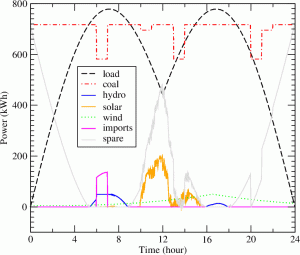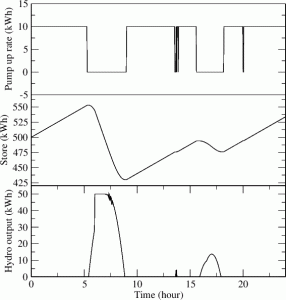Magnetic materials and devices
Magnetic recording
In my current role at Seagate I am mainly concerned with design of the magnetic writer in HAMR, which faces significantly different constraints than the writer in PMR did. For instance, the inclusion of a laser into the transducer device constrains the shape and position of the write pole and changes the recording physics. Particularly, the role of thermal energy during magnetization reversal of the media grains is completely new.

I am also working on aspects of laser behaviour and designing better ways to integrate the laser into the head, which improve device reliability.
Permanent magnets
High performance permanent magnets usually contain rare earth elements such as Nd, Dy and Pr. In particular, Dy is used in magnets that operate at high temperatures. However, rare earth elements are highly supply-critical and expensive. Since their use is growing fast too, it is essential to develop alternatives.
I was centrally involved in the modelling and design of heavy-rare-earth-free, rare-earth-free and rare-earth-reduced permanent magnets in a number of big, collaborative research projects, both in the EU and with worldwide industrial partners.
 Reversal processes of single Nd-Fe-B grains of a permanent magnet, with and without a soft surface defect. »Paper«
Reversal processes of single Nd-Fe-B grains of a permanent magnet, with and without a soft surface defect. »Paper«
 Numerical simulations of the reversal of Co spheroids, soft magnetic nanoparticles that could be used to construct a new type of shape anisotropy based permanent magnet. »Paper«
Numerical simulations of the reversal of Co spheroids, soft magnetic nanoparticles that could be used to construct a new type of shape anisotropy based permanent magnet. »Paper«
MRAM
Magnetic random access memory (MRAM) is a type of non-volatile computer memory that has a number of advantages over current technologies. Data is stored in the magnetic polarization of a soft magnetic thin film element. There are a number of ways to address MRAM cells; originally an external Oersted field was used to write but more recently the spin torque effect has been the method of choice due to better performance. The application of different spintronic phenomena in the writing and reading of MRAM is an ongoing and very exciting field.
Challenges for MRAM include the need to increase storage density, reduce power consumption and reduce switching current distribution. Domain wall trap MRAM (DWT-MRAM) was proposed as a way to reduce power consumption and improve switching field distribution, and my work focused on developing micromagnetic understanding of these reversal mechanisms.
Magnetic spin waves
Ferromagnetic spin waves have been proposed as a method to transmit data through a thin film or along a soft magnetic nanowire with low damping e.g. Permalloy. This could be the basis for a novel computer architecture, and could be integrated with existing CMOS systems.
One aspect of my research looked into the ability of spin waves to propagate along different structures (e.g. around bends in a nanowire) and through different quality nanowires (roughness and periodic surface defects).
 Ferromagnetic spin waves traversing a bend in a NiFe nanowire.
Ferromagnetic spin waves traversing a bend in a NiFe nanowire.
Optimization
Optimization applied to structural mechanics
Coupling finite element simulation codes with optimization algorithms allows one to find optimized solutions to many problems. In our work this has been applied to the optimization of structural wood joints, hard disk drives and permanent magnets.
 Robust surface response optimization algorithm applied to a design problem to minimize wood joint stress.
Robust surface response optimization algorithm applied to a design problem to minimize wood joint stress.
System Dynamics
- Real systems can often be broken down into constituent components but can quickly exhibit complex behaviour that are hard to understand by traditional methods. System Dynamics provides a way to model and test such systems. Our work focusses on power station planning and operations, specifically on matching load and demand in power grids where renewable energy sources are being incorporated, in order to suggest optimal levels of each type of generation. Connection to national and international electricity markets is included.
 Model of power generation grid including naive load model, coal, solar, wind and hydroelectric power sources. Various scenarios can be tested.
Model of power generation grid including naive load model, coal, solar, wind and hydroelectric power sources. Various scenarios can be tested.
 Hydroelectric power station operation during a single 24h cycle.
Hydroelectric power station operation during a single 24h cycle.
Lab-on-chip cancer diagnostics
- Cancer cell detection and filtering
- Circulating tumour cells (CTCs) flow through the blood and can metastasise to form new cancers in other parts of the body. Detection and diagnosis are critical to saving lives. Lab-on-chip methods are being developed to count and filter CTCs cheaply and effectively.
More info
Please visit my Google Scholar profile or ResearchGate profile for more information about my publications.